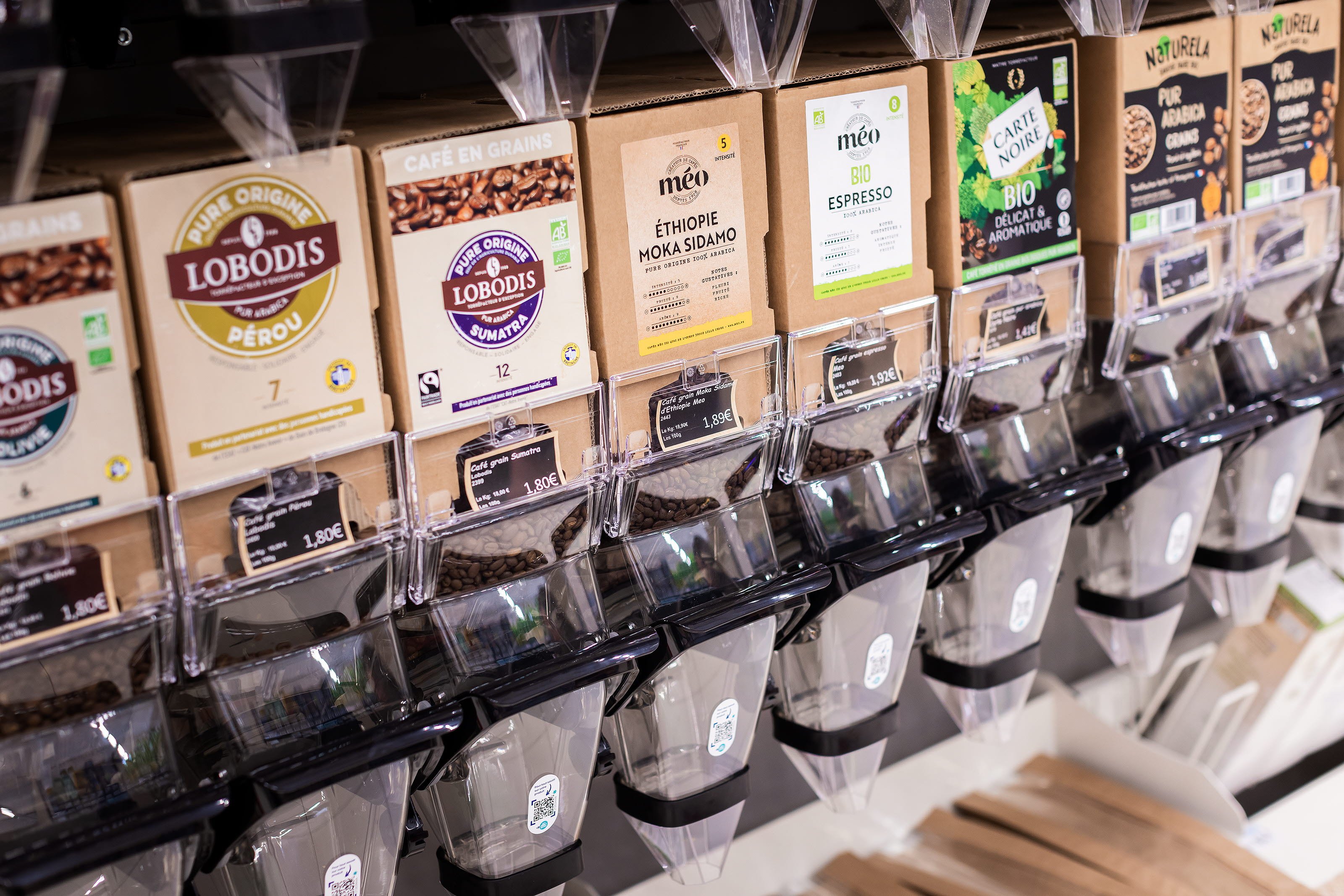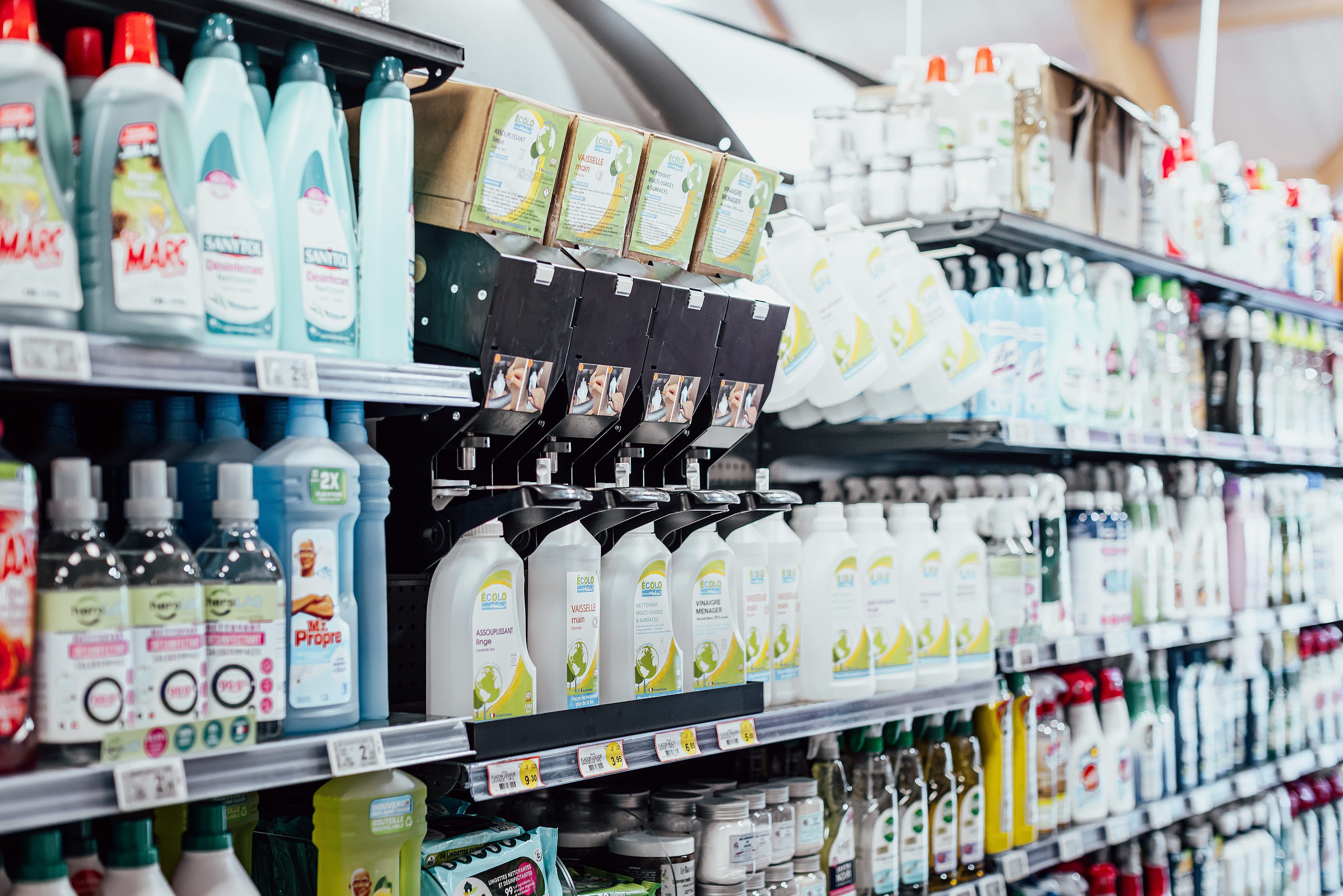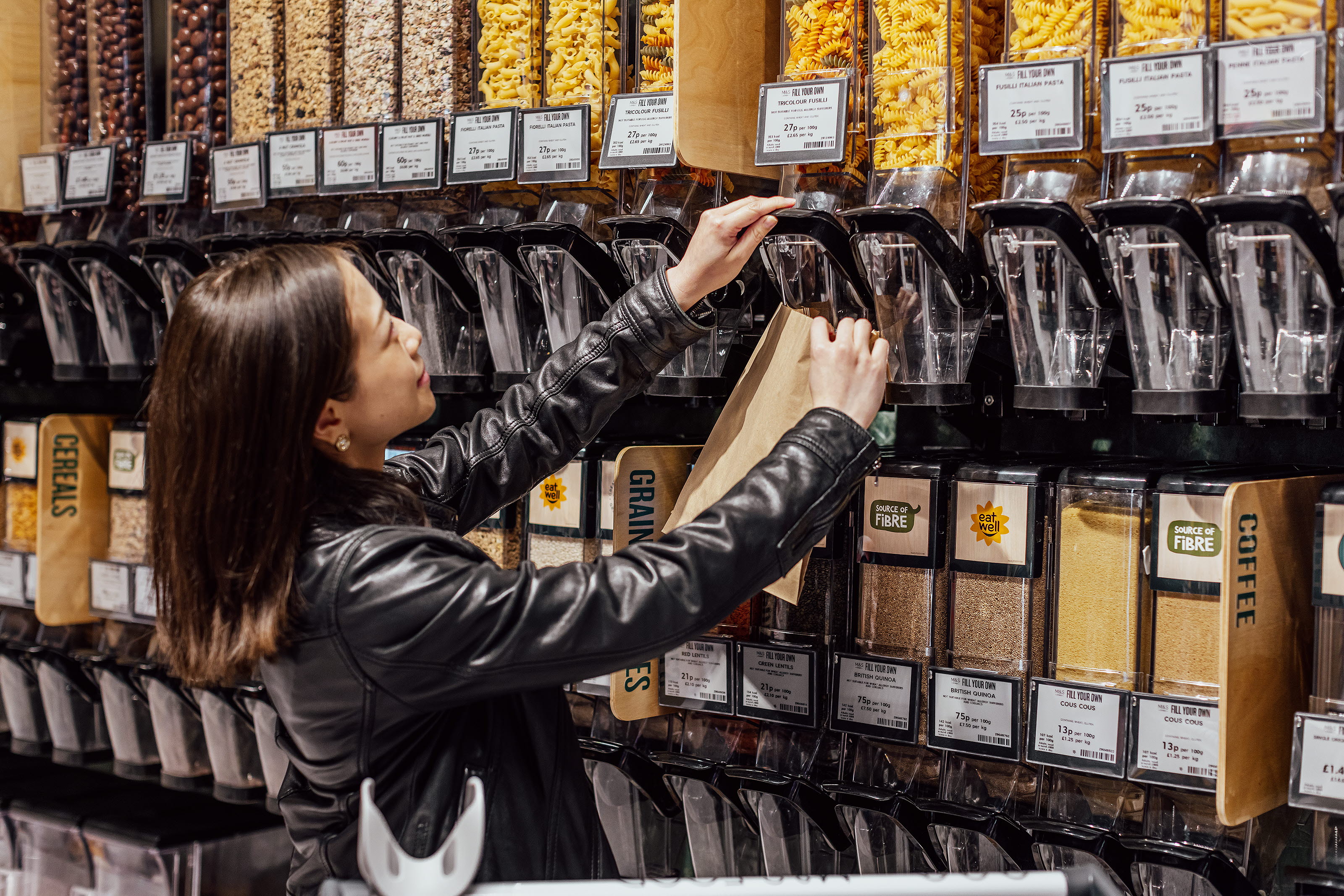
Ready to offer packaging-free merchandising?
We have some useful tips for you to consider when setting up your packaging-free station.These are some helpful hints to make it easier for you:
- Type of products
Choose the correct bin for your product. Different bins offer different benefits.
A gravity bin is ideal for dry products with firm consistency, such as nuts and cereals, while a scoop bin provides a good option for dry products with a soft texture, such as dried fruits. For easily spoiled products like coffee, closed box systems offer protection from oxidization. For liquid products, the viscosity will be the deciding factor if solutions using electricity are needed. - Supplier and supply chain consideration
Consider how your supplier and/or supply chain can support you:
• Do you have the same supplier for all packaging-free products to simplify management?
• Do you work with private labels and/or brand suppliers?
• Do you intend to manage the supply chain yourself? - Plan in-store maintenance
Cleanliness is a key criterion for shoppers, and bins need to be replenished regularly to drive sales. Closed box systems or bins that are easy to clean are faster to replenish and simplify maintenance. - Plan the location of the refill station
Installing packaging-free displays in the respective category alongside packaged items may help create awareness among current non-bulk shoppers. But it will require more time to maintain and additional scales in each category. - Motivate shoppers via pricing
Offering packaging-free products at a lower price than corresponding items in packaged form encourages shoppers to save money and shop more sustainably.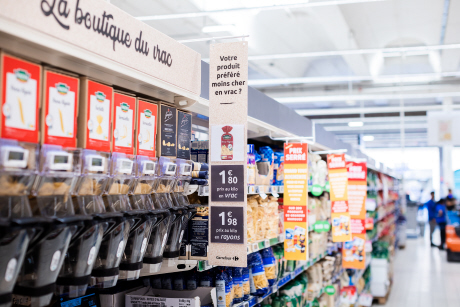
- Present a hygienic display
Hygiene is a general concern for many shoppers. Anti-bacterial handles help increase the perceived safety of shopping for loose foods, while closed box systems prevent food contamination. - Secure product safety and traceability
Preventing product interference and ensuring traceability are primary requirements for many brands and retailers. A closed box system with batch numbers allows tracking and direct food contact can be avoided in the store. For liquid products, it is necessary to use pre-specified bottles relevant to the product, in accordance with local legislation. - Simplify packaging-free shopping for shoppers
Make refill shopping easy by communicating the simple step-by-step process. Avoid complicated instructions! For instance, when weighing each purchase, sensors can be installed to help identify the right product faster. Apps provide additional product information as well. - Maximise branding and communication on each bin
Clear branding on the bins helps shoppers locate their preferred brands and products quickly. Provide information on each item, including price, nutritional facts, and ingredients, so shoppers can make educated decisions.
Refill merchandise gives shoppers the possibility to make sustainable and economical choices. With careful planning, embarking on packaging-free merchandising takes you closer to building long-term business value through sustainability.
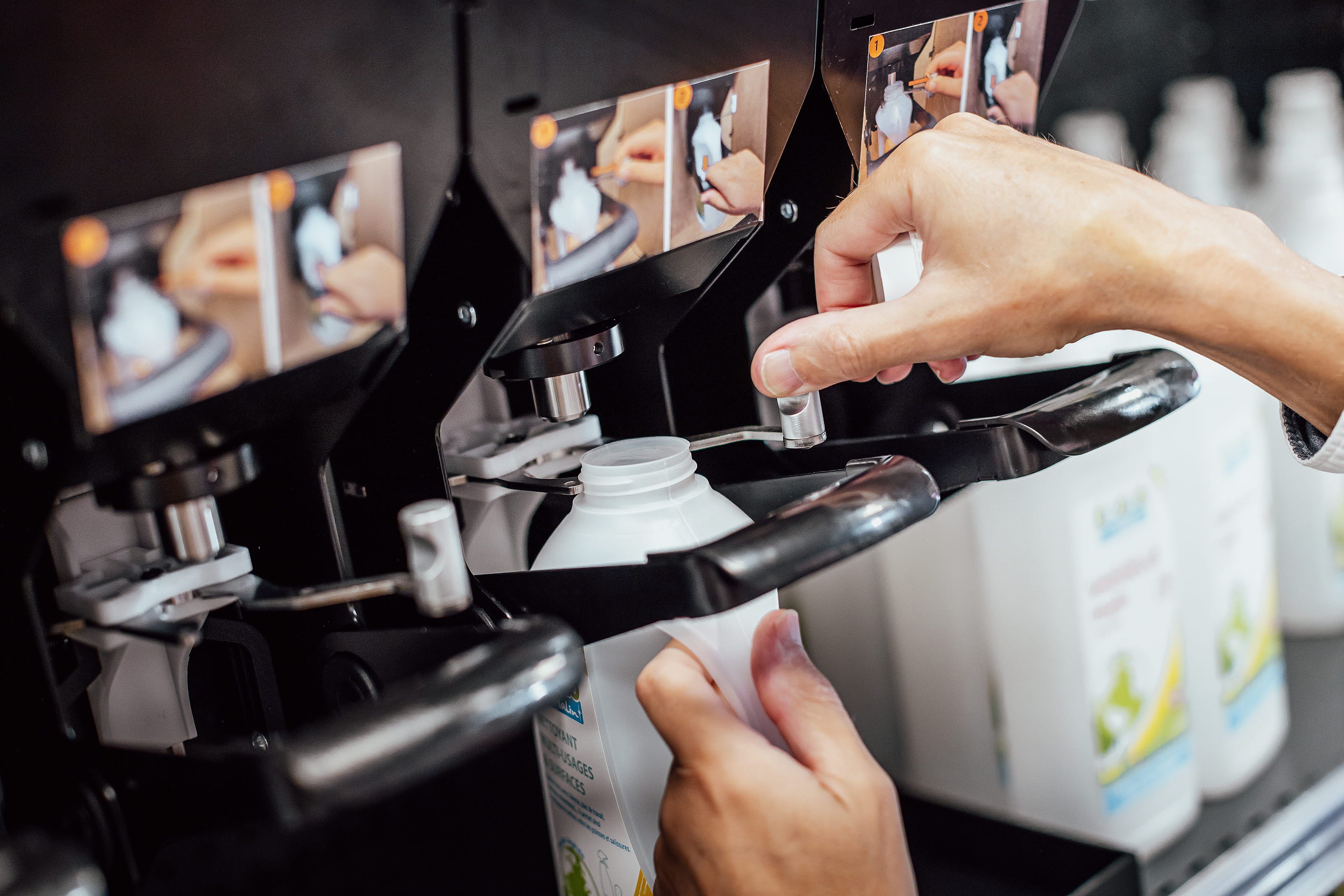
Make refill shopping easy
